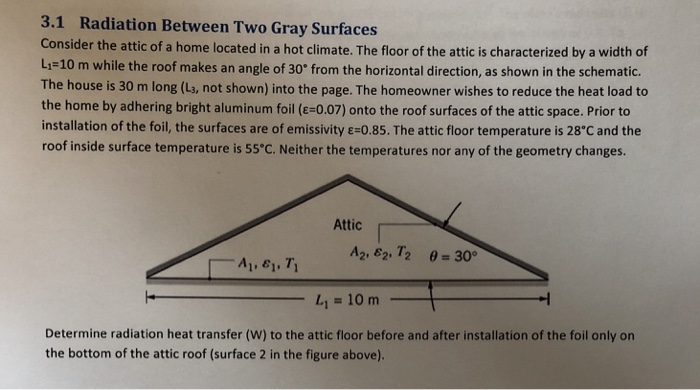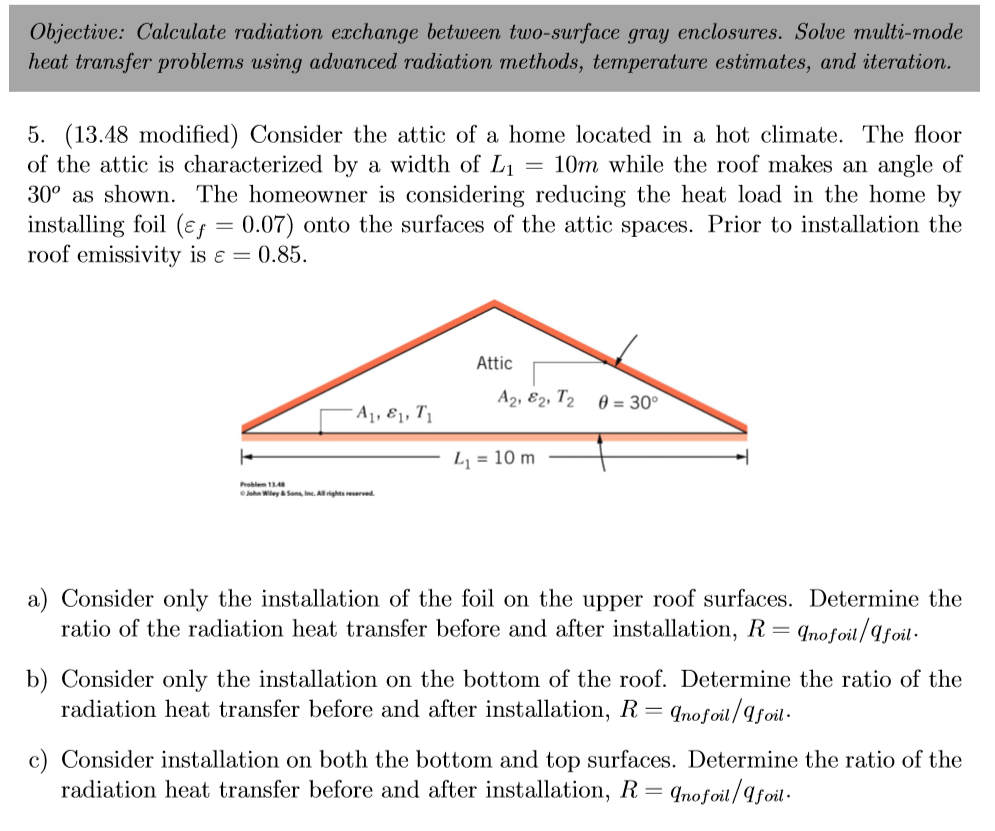Consider the two infinite gray surfaces shown in figure 19 5 we suppose that the surfaces are thick enough so that no radiation transmitted so consider a photon emitted from surface 1 remembering that the reflectance.
Radiation between two gray surfaces attic.
The portion of radiation exchanged between two differently oriented surfaces has to be defined by a geometric function known as view factor which is developed for gray diffusely radiating surfaces.
Surfaces form ideal closed enclosure and are separated by nonparcipating media.
The floor of the attic is characterized by a width of l1 10 m while the roof makes an angle of 30 from the horizontal direction as shown in the schematic.
Consider heat exchange between elementary areas da 1 and da 2 of two black radiating bodies having areas a 1 and a 2 respectively.
Radiation analysis of such enclosures becomes very complicated unless some simplifying assumptions are made.
The elementary areas are at a distance r apart and the normal to these areas make angles 0 1 and 0 2 with the line joining them.
Describe radiation exchange among surfaces in which the surfaces can be perfect absorbers of radiation black or diffusely absorbing gray.
Heat exchange between black bodies.
Heat transfer between surfaces based on two assumptions.
Diffuse gray surfaces the analysis of radiation transfer in enclosures consisting of black surfaces is relatively easy as we have seen but most enclosures encountered in practice involve nonblack surfaces which allow multiple reflections to occur.
3 1 radiation between two gray surfaces consider the attic of a home located in a hot climate.



























